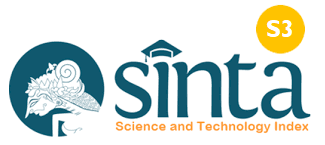School Strategic Planning Utilizing VMTS Framework
A Case Study at SMP Negeri 1 Kedungwuni Pekalongan
DOI:
https://doi.org/10.37329/cetta.v8i3.4502Keywords:
Strategic Planning, VMTS Model, School ManagementAbstract
This study examines the implementation of strategic planning based on the VMTS model (Vision, Mission, Goals, and Objectives) at SMP Negeri 1 Kedungwuni, Pekalongan Regency. Using a qualitative case study approach, data were collected through in-depth interviews, participatory observation, and document analysis. The results show that although the school has formally established its vision, mission, goals, and objectives, the dissemination and understanding among staff and stakeholders remain uneven, leading to suboptimal implementation. Challenges such as limited budget, human resources, and the absence of systematic monitoring and evaluation hinder the execution of strategic programs. Additionally, stakeholder participation needs improvement to foster stronger ownership and commitment. The study recommends enhancing communication and socialization of strategic plans, increasing stakeholder involvement, establishing structured monitoring and evaluation systems, and optimizing resource management. These measures are vital to support the sustainable improvement of educational quality at SMP Negeri 1 Kedungwuni.
References
Ahmad, N. H., & Ibrahim, F. (2019). Strategic Planning and School Performance: A Study on Malaysian Secondary Schools. Journal of Educational Planning and Administration, 33(2), 157-176.
Anderson, D., & Anderson, L. A. (2010). Beyond Change Management: How to Achieve Breakthrough Results Through Conscious Change Leadership. John Wiley & Sons.
Bryson, J. M. (2018). Strategic Planning for Public and Nonprofit Organizations. John Wiley & Sons.
David, F. R. (2017). Strategic Management: Concepts and Cases. Pearson Education.
Dewi, M. R., & Santoso, A. (2020). Barriers to Effective Strategic Planning Implementation in Schools: A Case Study. Journal of School Leadership, 12(2), 99-112.
Fitriani, L. (2022). Strategic Planning and School Quality: A Study of SMP Negeri 1 Kedungwuni. Journal of School Management, 3(1), 12-25.
Hartono, R. (2019). Challenges in Implementing Strategic Planning in Indonesian Secondary Schools. Asian Journal of Education, 11(4), 305-316.
Johnson, G., Scholes, K., & Whittington, R. (2017). Exploring Corporate Strategy. Pearson Education.
Kartowagiran, B. (2014). The Role of Strategic Planning in School Improvement. Jurnal Manajemen Pendidikan, 2(1), 45-53.
Köse, S., & Korkmaz, T. (2016). The Role of Stakeholder Participation in Strategic Planning at Schools. Educational Sciences: Theory and Practice, 16(3), 765-784.
Kurniawan, T., Hartanto, E., & Suryanto, B. (2021). Enhancing School Performance through Inclusive Strategic Planning. International Journal of Education and Management, 9(3), 211-222.
Lestari, S., & Pramono, A. (2022). Implementing Key Performance Indicators for School Strategic Management Evaluation. Educational Review and Practice, 11(3), 212-227.
Nugroho, D. (2019). Adaptive Strategic Management for School Improvement in Indonesia. Journal of Education and Development, 14(1), 33-45.
Nurhayati, R. (2017). The Importance of Monitoring and Evaluation in School Strategic Planning. Jurnal Pendidikan dan Kebudayaan, 22(4), 423-435.
Pearce, J. A., & Robinson, R. B. (2015). Strategic Management: Formulation, Implementation, and Control. McGraw-Hill.
Prasetyo, B. (2018). The Role of Documentation and Monitoring in School Strategic Management. Indonesian Journal of Educational Research, 6(1), 56-65.
Putra, R. E., Sari, L. P., & Hidayat, R. (2022). Enhancing School Management with Digital Monitoring Systems: A Case Study. International Journal of Educational Technology, 14(1), 45-58.
Rahman, M., Azizah, N., & Fauzi, A. (2023). Multi-Stakeholder Participation and Accountability in School Strategic Planning. Journal of Public Administration and Education, 9(1), 101-115.
Sari, D. P., & Purnomo, H. (2020). Stakeholder Participation in Strategic Planning at Junior High Schools. Educational Administration Quarterly, 8(1), 45-58.
Salleh, M. M., & Johari, R. (2015). Strategic Planning and School Effectiveness: The Application of VMTS Model. International Journal of Education and Management Engineering, 5(4), 1-11.
Steiner, G. A. (2018). Strategic Planning: What Every Manager Must Know. Free Press.
Susanto, H., Wibowo, A., & Purwanto, D. (2021). The Role of Communication in the Implementation of School Vision and Mission. Journal of Educational Management, 10(2), 89-99.
Sutrisno, A., & Lestari, R. (2020). The Integration of Evaluation in Strategic Planning at Junior High Schools. Educational Review and Development Journal, 10(3), 142-155.
Wahyudi, S., & Pramudito, A. (2021). The Influence of External Environment on School Strategic Planning: Evidence from Central Java. Journal of Educational Policy Studies, 7(2), 78-89.
Wheelen, T. L., & Hunger, J. D. (2012). Strategic Management and Business Policy. Pearson.
Yusuf, A., & Wibowo, S. (2019). The Impact of Strategic Planning on School Performance: Evidence from Indonesian Secondary Schools. Journal of Educational Management, 5(2), 120-130.
Zulkifli, M. (2017). Monitoring and Evaluation in School Strategic Planning. Journal of Educational Administration and Leadership, 5(4), 189-200.
Downloads
Published
How to Cite
Issue
Section
License
Copyright (c) 2025 Supomo Ari Sasongko, Sigit Setiyo Budi, Khelly Novi Susanti, Susi Erviana, Ngurah Ayu Nyoman

This work is licensed under a Creative Commons Attribution-ShareAlike 4.0 International License.
An author who publishes in the Cetta : Jurnal Ilmu Pendidikan agrees to the following terms:
- Author retains the copyright and grants the journal the right of first publication of the work simultaneously licensed under the Creative Commons Attribution-ShareAlike 4.0 License that allows others to share the work with an acknowledgement of the work's authorship and initial publication in this journal
- Author is able to enter into separate, additional contractual arrangements for the non-exclusive distribution of the journal's published version of the work (e.g., post it to an institutional repository or publish it in a book) with the acknowledgement of its initial publication in this journal.
- Author is permitted and encouraged to post his/her work online (e.g., in institutional repositories or on their website) prior to and during the submission process, as it can lead to productive exchanges, as well as earlier and greater citation of the published work (See The Effect of Open Access).
Read more about the Creative Commons Attribution-ShareAlike 4.0 Licence here: https://creativecommons.org/licenses/by-sa/4.0/.





